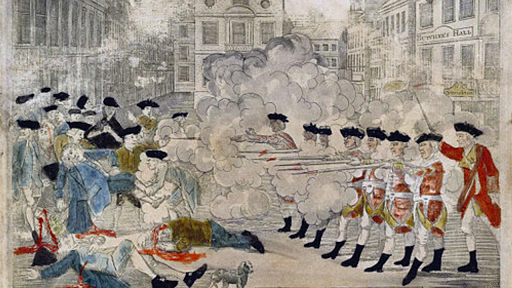Because the soldiers sent to Boston to support the Townshend Act of 1767 were poorly paid, some of them tried to find part-time work, a practice that didn’t sit well with many Bostonians. So it wasn’t unusual for fights to break out between soldiers and groups of colonists.
Boston Massacretext Context And Subtextmac's History Textbook

The Boston Massacre was an incident that happened on March 5, 1770 in which British soldiers fired into a crowd of protesters who had begun throwing rocks and snowballs. It shifted American. The Boston massacre, as it came to be called, was a deadly confrontation that broke out between British soldiers and a mob of colonists. It was referred to by the British as the Incident on King Street. This riot took place on the 5th of March, 1770. It started as a brawl between a soldier and an American colonist.
On the night of March 5, a small mob of lowlifes began throwing rocks and snowballs at a British sentry outside the customs house.
Another 20 British soldiers appeared with fixed bayonets, the crowd grew to as many as 300 boys and men, and after about 30 minutes of being taunted and pelted with rocks and sticks, one of the soldiers opened fire. A few minutes later, 11 members of the mob were dead or wounded.
At a subsequent trial, the soldiers were ably defended by a Boston lawyer named John Adams, and all but two were acquitted. The two soldiers found guilty were branded on the hand and then let go. But the radicals among the colonists milked the incident for all it was worth.
Boston Massacretext Context And Subtextmac's History Pdf

Boston Massacretext Context And Subtextmac's History 3rd Edition
A highly exaggerated engraving of the “massacre” was made by a silversmith named Paul Revere, and copies of it circulated all over the colonies.
Ironically, on the day of the incident, the Townshend Acts were repealed by Parliament — except for the tax on tea.
Because the soldiers sent to Boston to support the Townshend Act of 1767 were poorly paid, some of them tried to find part-time work, a practice that didn’t sit well with many Bostonians. So it wasn’t unusual for fights to break out between soldiers and groups of colonists.
On the night of March 5, a small mob of lowlifes began throwing rocks and snowballs at a British sentry outside the customs house.
Another 20 British soldiers appeared with fixed bayonets, the crowd grew to as many as 300 boys and men, and after about 30 minutes of being taunted and pelted with rocks and sticks, one of the soldiers opened fire. A few minutes later, 11 members of the mob were dead or wounded.

At a subsequent trial, the soldiers were ably defended by a Boston lawyer named John Adams, and all but two were acquitted. The two soldiers found guilty were branded on the hand and then let go. But the radicals among the colonists milked the incident for all it was worth.
A highly exaggerated engraving of the “massacre” was made by a silversmith named Paul Revere, and copies of it circulated all over the colonies.
Boston Massacretext Context And Subtextmac's History Encyclopedia
Ironically, on the day of the incident, the Townshend Acts were repealed by Parliament — except for the tax on tea.
